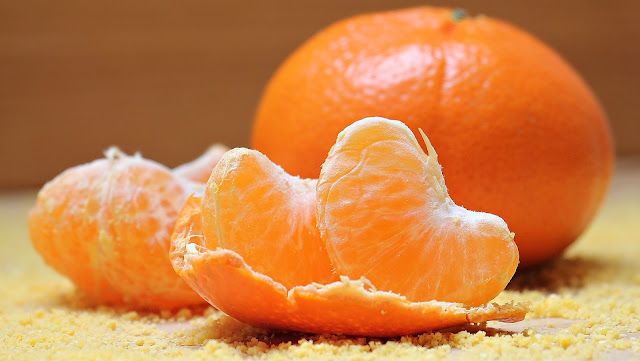Is Alocasia Black Velvet Plant Poisonous
Brief Overview Of Alocasia Polly & Importance In Horticulture
Alocasia Polly is a species of plant belonging to the family Araceae and is known for its large, glossy green leaves with prominent veins. It is native to Asia and is commonly referred to as the "Elephant Ear" due to the shape of its leaves resembling the ears of an elephant.
In horticulture, Alocasia Polly is prized for its ornamental value and is widely grown as a houseplant or in outdoor tropical gardens. It adds a bold, tropical touch to any setting and its large leaves serve as a focal point in the landscape. Additionally, it is also popular for its air-purifying qualities, as it is known to remove harmful pollutants from the air.
Alocasia Types
Alocasia is a genus of over 80 species of flowering plants native to Southeast Asia and the Eastern Himalayas. They are commonly referred to as "elephant ear plants" due to the large, heart-shaped leaves that resemble an elephant's ear. Some popular species include Alocasia amazonica, Alocasia maharani, Alocasia reginula, Alocasia sanderiana, and Alocasia zebrina. They prefer warm, moist environments and well-draining soil. They are generally propagated through division of the root system or by removing offsets that grow at the base of the plant. Alocasia plants are popular houseplants due to their attractive leaves and fast growth, but they can be challenging to care for and are often toxic to pets and humans.
Physical Characteristics Of Alocasia Polly
Alocasia Polly has several distinct physical characteristics that make it easily recognizable.
Leaf Structure: The leaves of Alocasia Polly are large, typically growing up to 20 inches in length and 12 inches in width. They have a distinctive shape, with a long petiole that supports the oval-shaped blade. The leaves are dark green and glossy, with prominent veins that add to their striking appearance.
Stem Structure: The stem of Alocasia Polly is thick, fleshy and upright, growing to a height of 2-3 feet. It is generally hidden by the large leaves and serves to support the plant.
Root System: Alocasia Polly has a large underground tuber, which stores water and nutrients for the plant. It also has a strong network of roots that anchors the plant and provides stability. The root system is best developed in a well-draining soil that is rich in organic matter.
These physical characteristics make Alocasia Polly an attractive and distinctive addition to any indoor or outdoor garden setting.
Growing Conditions Of Alocasia Polly
Alocasia Polly requires specific growing conditions to thrive.
Ideal temperature: This plant prefers temperatures between 60°F and 90°F and can tolerate short periods of lower temperatures. However, it is important to protect it from extended periods of cold or frost, as it is not frost-tolerant.
Light requirements: Alocasia Polly prefers bright, indirect light, but can tolerate some shade. Direct sun exposure can cause the leaves to scorch or fade, so it is best to place the plant near a window that receives filtered light.
Soil and water needs: Alocasia Polly prefers well-draining soil that is rich in organic matter. Overwatering can cause root rot, so it is important to allow the top inch of soil to dry out between waterings. Water the plant deeply and then allow it to drain thoroughly. During the growing season, it may need to be watered more frequently, while in the winter, the frequency of watering should be reduced.
By providing these growing conditions, Alocasia Polly can thrive and add a bold, tropical touch to any indoor or outdoor setting.
Propagation Of Alocasia Polly
Alocasia Polly can be propagated through several methods, including division, rhizome cuttings, and seed propagation.
Division: This method involves separating offsets or "pups" from the main plant and potting them individually. The offsets should have a well-developed root system and be large enough to be able to survive on their own. This method is best done during the spring or summer.
Rhizome cuttings: This method involves taking a cutting from the rhizome and rooting it in water or a rooting hormone. Once roots have developed, the cutting can be potted up in a well-draining soil mixture. This method is best done during the spring or summer.
Seed Propagation: This method involves planting seeds in a well-draining soil mixture and maintaining a warm, moist environment until they have germinated. This method can be more challenging than the others and is best left to experienced growers.
Regardless of the propagation method used, it is important to provide the new plants with the proper growing conditions, including the correct temperature, light, soil, and water needs, in order to ensure their success.
Alocasia Plant Benefits For Health And Wellness
There
is limited scientific evidence to support the specific health and
wellness benefits of Alocasia plants. However, some general benefits of
indoor plants for health and wellness include:
- Improved air quality: Indoor plants have been shown to purify the air by removing harmful pollutants and increasing the levels of oxygen.
- Stress relief: Studies have shown that being around plants can help reduce stress and improve mood.
- Improved concentration: Studies have shown that indoor plants can improve concentration and productivity, especially in office environments.
- Boost to the immune system: Indoor plants have been shown to increase the levels of certain beneficial bacteria in the air, which can help boost the immune system.
- Increased sense of well-being: Studies have shown that being around plants can increase feelings of well-being and happiness.
It's worth noting that these
benefits apply to indoor plants in general, not just Alocasia
specifically. As with all things related to health and wellness, it's
important to consult a healthcare professional before making any changes
to your environment or routine.
Alocasia Black Velvet
Alocasia Black Velvet is a hybrid cultivar of Alocasia, a genus of plants in the family Araceae. It is known for its dark, velvety black leaves with contrasting green veins. The leaves are large, glossy, and heart-shaped, growing up to 18 inches in length and 12 inches in width. The stems are also dark, adding to the plant's overall striking appearance.
In terms of growing conditions, Alocasia Black Velvet prefers bright, indirect light and high humidity. It should be protected from direct sun, as this can cause the leaves to scorch. The plant prefers well-draining soil that is rich in organic matter and should be watered regularly, with the top inch of soil allowed to dry out between waterings.
Alocasia Black Velvet is prized for its ornamental value and is widely grown as a houseplant or in outdoor tropical gardens. Its unique foliage adds a bold, dramatic touch to any setting, making it a true showstopper.
Overall, Alocasia Black Velvet is a beautiful and rewarding plant for those who are willing to provide it with the proper growing conditions. With its striking black foliage, it is a great addition to any indoor or outdoor garden.
Alocasia Silver Dragon
Alocasia Silver Dragon is a hybrid cultivar of the Alocasia genus of plants, known for its large, glossy leaves with a silver-gray color and contrasting green veins. The leaves are shaped like an arrowhead and can grow up to 18 inches in length and 12 inches in width. The stems are green and are often used to support the large leaves.
In terms of growing conditions, Alocasia Silver Dragon prefers bright, indirect light and high humidity. It should be protected from direct sun, as this can cause the leaves to scorch. The plant prefers well-draining soil that is rich in organic matter and should be watered regularly, with the top inch of soil allowed to dry out between waterings.
Alocasia Silver Dragon is prized for its ornamental value and is widely grown as a houseplant or in outdoor tropical gardens. Its unique foliage adds a bold, dramatic touch to any setting, making it a true showstopper.
Overall, Alocasia Silver Dragon is a beautiful and rewarding plant for those who are willing to provide it with the proper growing conditions. With its striking silver-gray foliage, it is a great addition to any indoor or outdoor garden.
Alocasia Dragon Scale
Alocasia Dragon Scale is a hybrid cultivar of the Alocasia genus of plants, known for its large, glossy leaves with a metallic silver-green color and contrasting green veins. The leaves are shaped like an arrowhead and can grow up to 18 inches in length and 12 inches in width. The stems are green and are often used to support the large leaves.
In terms of growing conditions, Alocasia Dragon Scale prefers bright, indirect light and high humidity. It should be protected from direct sun, as this can cause the leaves to scorch. The plant prefers well-draining soil that is rich in organic matter and should be watered regularly, with the top inch of soil allowed to dry out between waterings.
Alocasia Dragon Scale is prized for its ornamental value and is widely grown as a houseplant or in outdoor tropical gardens. Its unique foliage adds a bold, dramatic touch to any setting, making it a true showstopper.
Overall, Alocasia Dragon Scale is a beautiful and rewarding plant for those who are willing to provide it with the proper growing conditions. With its striking silver-green foliage, it is a great addition to any indoor or outdoor garden.
Alocasia Wentii
Alocasia Wentii is a species of the Alocasia genus of plants known for its large, glossy green leaves with prominent veins. The leaves can grow up to 2 feet in length and 1.5 feet in width and are shaped like an arrowhead. The stems are also green and can grow up to 3 feet tall. Alocasia Wentii prefers bright, indirect light and high humidity, and should be protected from direct sun. The plant prefers well-draining soil that is rich in organic matter and should be watered regularly, with the top inch of soil allowed to dry out between waterings. Alocasia Wentii is widely grown as a houseplant or in outdoor tropical gardens for its ornamental value and unique foliage. It is a beautiful and rewarding plant for those who provide proper growing conditions.
Alocasia Erydek:
Alocasia Erythrorrhachis, commonly known as Alocasia Erydek, is a species of the Alocasia genus of plants. It is known for its large, glossy green leaves with prominent veins and a distinctive red back. The leaves can grow up to 2 feet in length and 1.5 feet in width and are shaped like an arrowhead. The stems are also green and can grow up to 3 feet tall. Alocasia Erydek prefers bright, indirect light and high humidity, and should be protected from direct sun. The plant prefers well-draining soil that is rich in organic matter and should be watered regularly, with the top inch of soil allowed to dry out between waterings. Alocasia Erydek is widely grown as a houseplant or in outdoor tropical gardens for its ornamental value and unique foliage. It is a beautiful and rewarding plant for those who provide proper growing conditions.
Alocasia Odora
Alocasia Odora, also known as the Elephant Ear plant, is a species of the Alocasia genus of plants. It is known for its large, heart-shaped leaves with prominent veins, which can grow up to 2 feet in length and 1.5 feet in width. The leaves are green on top and a purplish-red color on the bottom. The stems are also green and can grow up to 3 feet tall. Alocasia Odora prefers bright, indirect light and high humidity, and should be protected from direct sun. The plant prefers well-draining soil that is rich in organic matter and should be watered regularly, with the top inch of soil allowed to dry out between waterings. Alocasia Odora is widely grown as a houseplant or in outdoor tropical gardens for its ornamental value and unique foliage. It is a beautiful and rewarding plant for those who provide proper growing conditions.
Alocasia Zebrina
Alocasia Zebrina is a species of the Alocasia genus of plants, known for its distinctive, large leaves with green and silver-striped markings. The leaves are heart-shaped and can grow up to 2 feet in length and 1.5 feet in width. The stems are green and can grow up to 3 feet tall. Alocasia Zebrina prefers bright, indirect light and high humidity, and should be protected from direct sun. The plant prefers well-draining soil that is rich in organic matter and should be watered regularly, with the top inch of soil allowed to dry out between waterings. Alocasia Zebrina is widely grown as a houseplant or in outdoor tropical gardens for its ornamental value and unique foliage. Its striking green and silver stripes make it a true standout in any indoor or outdoor garden. It is a beautiful and rewarding plant for those who provide proper growing conditions.
Conclusion
In conclusion, Alocasia Polly is a beautiful and striking plant that is prized for its ornamental value. With its large, glossy leaves and unique shape, it adds a bold, tropical touch to any indoor or outdoor setting.
The key features of Alocasia Polly include its large, oval-shaped leaves with prominent veins, thick, fleshy stem, and large underground tuber. To ensure the best growth and health of the plant, it is important to provide it with the proper growing conditions, including bright, indirect light, a warm temperature range, well-draining soil, and proper watering.
For those interested in growing and caring for Alocasia Polly, it is important to remember that it is a tropical plant and requires specific growing conditions to thrive. This may require some additional effort, but the results are well worth it, as this plant is a true showstopper in any setting.







